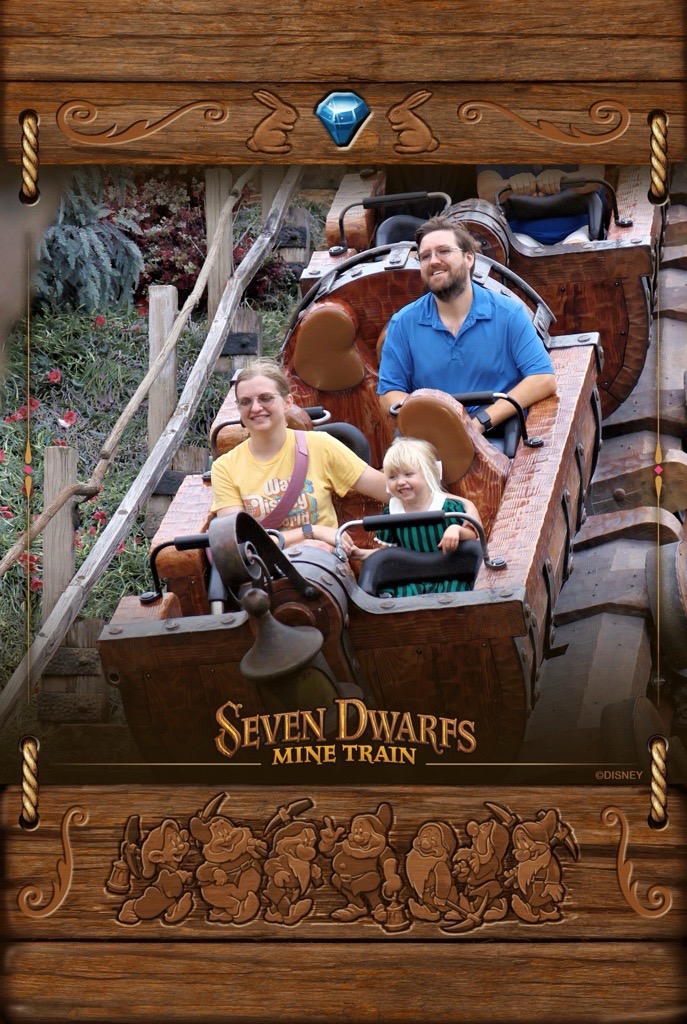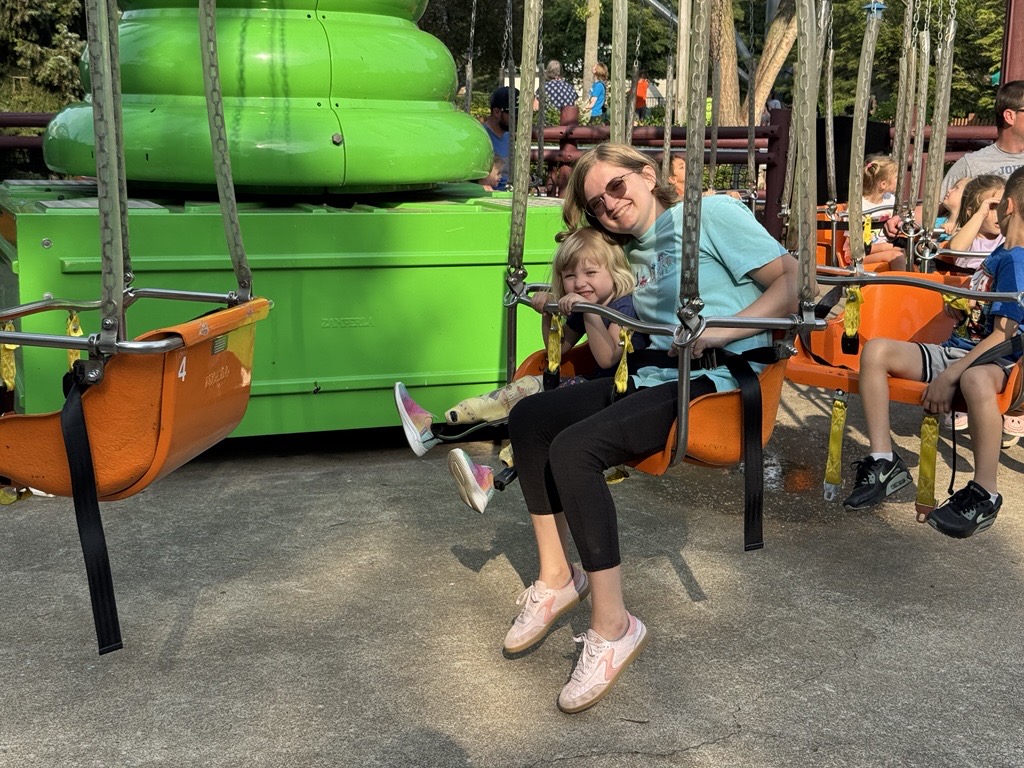Flying with a Young Amputee
On Gwen’s first flight, we kept her prosthetics on during takeoff. She was unusually upset and eventually told us her legs were hurting. We took her prosthetics off mid-flight and she immediately calmed down. Since then, we’ve always requested accessible pre-boarding to give us time to take her prosthetics off and store them comfortably before takeoff.
While this may not affect all amputees, removing her prosthetics during flights has made traveling much more comfortable for Gwen. If your child shows signs of discomfort during air travel, this could be something to consider.
Bringing a Medical Bag on Flights
If your child needs medical supplies, mobility gear, or prosthetic care items when traveling, you’re allowed to bring an extra carry-on or checked bag free of charge on any U.S. airline. This is protected by the Air Carrier Access Act and the Department of Transportation’s 14 CFR § 382.121.
The bag must be used exclusively for medical or assistive items, such as prosthetic liners, compression garments, wound care supplies, or assistive technology.
You can use this medical bag as a carry-on or check it at the counter. Airlines cannot charge you a baggage fee for it, and it doesn't count toward your usual baggage limit. TSA may inspect it, but there’s no requirement for a doctor’s note or prescription, just pack the items together and let staff know it’s medical.
For more details, check the DOT’s guidance on traveling with a disability.
Accessibility Card
Some theme parks now require families to have an Accessibility Card in order to receive disability accommodations. This includes places like Universal Studios, Cedar Point, and Kings Island. The card itself doesn’t replace each park’s individual system, but it’s the first step in the process.
To get one, you fill out a form online and upload a doctor’s note confirming that your child has a medical need for support. You’ll be asked about the kinds of help your child might need, things like using a stroller in line, having extra time to board, or avoiding long waits in crowds. Once approved, you get a digital card with your child’s name and photo.
At the park, you bring the card to Guest Services. They’ll review it and then provide whatever pass or support their system uses. Each park is different. Some use return time passes, some offer alternate entrances, and others give specific tags for strollers or wheelchairs. The Accessibility Card helps standardize that first step so you don’t have to repeat medical information at every location.
While some families have mixed feelings about the extra step, the process was straightforward for us. The form only took a few minutes, and we had the card ready within a couple of days. If you’re planning a theme park visit, it’s worth checking whether that park requires the card ahead of time so you don’t run into delays at the gate.
Disney World
Of all the theme parks we’ve visited, Disney World has been the most accessible for Gwen. There hasn’t been a single ride or activity she couldn’t do. At Guest Services, we were able to get a stroller tag that let us use her stroller as a wheelchair, which meant we could take it through the queue lines. That has been available every time we’ve gone, and it’s made a big difference.
Gwen being able to ride everything without question has been amazing. It’s something we haven’t seen at most other parks. At some places, kids with prosthetics aren’t allowed on certain rides at all or are told to remove their legs to ride. Disney hasn’t done that. She gets to enjoy the park the same way as everyone else, which is a big deal.
Disney also offers a program called Disability Access Service or DAS. It’s supposed to help guests who can’t wait in traditional lines by letting them schedule a return time for a ride through the app or at a Guest Experience location. It’s not a front-of-the-line pass. You wait the same amount of time, but you’re able to do something else while waiting.
What’s unclear is who actually qualifies. Disney says DAS is for guests with a developmental disability like autism or similar, but they don’t explain what “similar” means. If they really just mean autism, they should say that. Using the broader term “developmental disability” without explaining it seems to confuse both guests and cast members. The actual definition of a developmental disability is much broader and includes both mental and physical impairments, depending on how they affect daily life. So it’s hard to know where the line is.
The process for applying is pretty straightforward, but whether you’re approved seems to depend a lot on the individual cast member. It starts with a live video chat, which you can do up to 60 days before your trip. The person applying has to be on the call. If you’re approved, DAS is good for the length of your ticket or up to a year, and you can use it for yourself and up to three other people.
We’ve done the interview three different times for Gwen. The first time, she qualified and we were given return times throughout the day. The second and third time, she didn’t qualify. Same child, same needs, just a different cast member. That part is frustrating. Even more confusing, we’ve had cast members at the beginning of lines stop us to suggest applying for DAS, not realizing we already tried and were denied.
For our family, the stroller-as-wheelchair tag has been the most helpful accommodation, and Disney has always been consistent about offering it. Gwen being able to ride every single attraction without question is what keeps us coming back. That alone has made Disney feel more inclusive than any other theme park we’ve visited. But it would be nice if the DAS process made more sense, for families and cast members alike.

Gwen loving every moment on the Seven Dwarfs Mine Train at Disney World.
National Parks Access Pass
If your child has a permanent disability, including a limb difference, you can apply for a free Interagency Access Pass. This pass gives lifetime entry to national parks and more than two thousand other federal recreation sites across the country. We got one for Gwen, and it was an easy way to open up more travel options for the future.
The pass covers entrance fees for the passholder and usually everyone in the same vehicle. It works at national parks, national forests, and places run by the Bureau of Land Management, the U.S. Army Corps of Engineers, and a few others. It does not cover things like parking at state parks or reservations for campgrounds, but it’s a great benefit for families who enjoy being outdoors.
To get the pass, you fill out a short form and provide documentation of the disability. That can be a doctor’s note, SSI letter, or something similar that shows a permanent medical condition. You can apply online or in person at most national park entrance stations. There’s a five dollar processing fee if you order it online.
It’s worth looking into even if you don’t have a park trip planned yet. The pass never expires, and it’s one less thing to worry about when you’re planning a future trip. We keep Gwen’s in our glovebox so it’s always ready to go.
Clearwater Marine Aquarium – INSPIRE Program
Clearwater Marine Aquarium in Florida is home to the late Winter the dolphin, whose story inspired the movie Dolphin Tale. Winter swam with a prosthetic tail after losing hers, and became a powerful symbol of hope and resilience for children with limb differences.
The aquarium’s INSPIRE Program is specially designed to create meaningful experiences for individuals with limb differences and other challenges. Through personalized tours and educational encounters, the program celebrates diversity and determination.
When we visited with Gwen, she had the incredible opportunity to see and touch one of Winter's prosthetic tails. It was a moving, unforgettable experience that helped her see how differences can be sources of strength and inspiration.
Gwen next to Winter's tail.
Cedar Point
Our first trip to Cedar Point included some moments that made Gwen feel singled out because of her prosthetics. Ride operators frequently stopped us to verify eligibility, and some didn’t know how to address her disability appropriately. We shared feedback with the park about the need for better staff training and more consistent ADA procedures.
However, when we returned this year, the experience had greatly improved. Gwen enjoyed the park without being questioned or delayed at any ride. Staff didn’t single her out, and she had an amazing time. We hope these changes continue and that other families experience the same kindness we did on our second visit.

Riding the swings at Cedar Point, a day full of smiles and sunshine.
Home | First Steps | Sports & Activities | Groups & Community | Accessible Playgrounds | Camps & Programs | Travel & Vacations | Limb Difference in Media | Prosthetics & Equipment | Care Teams & Providers